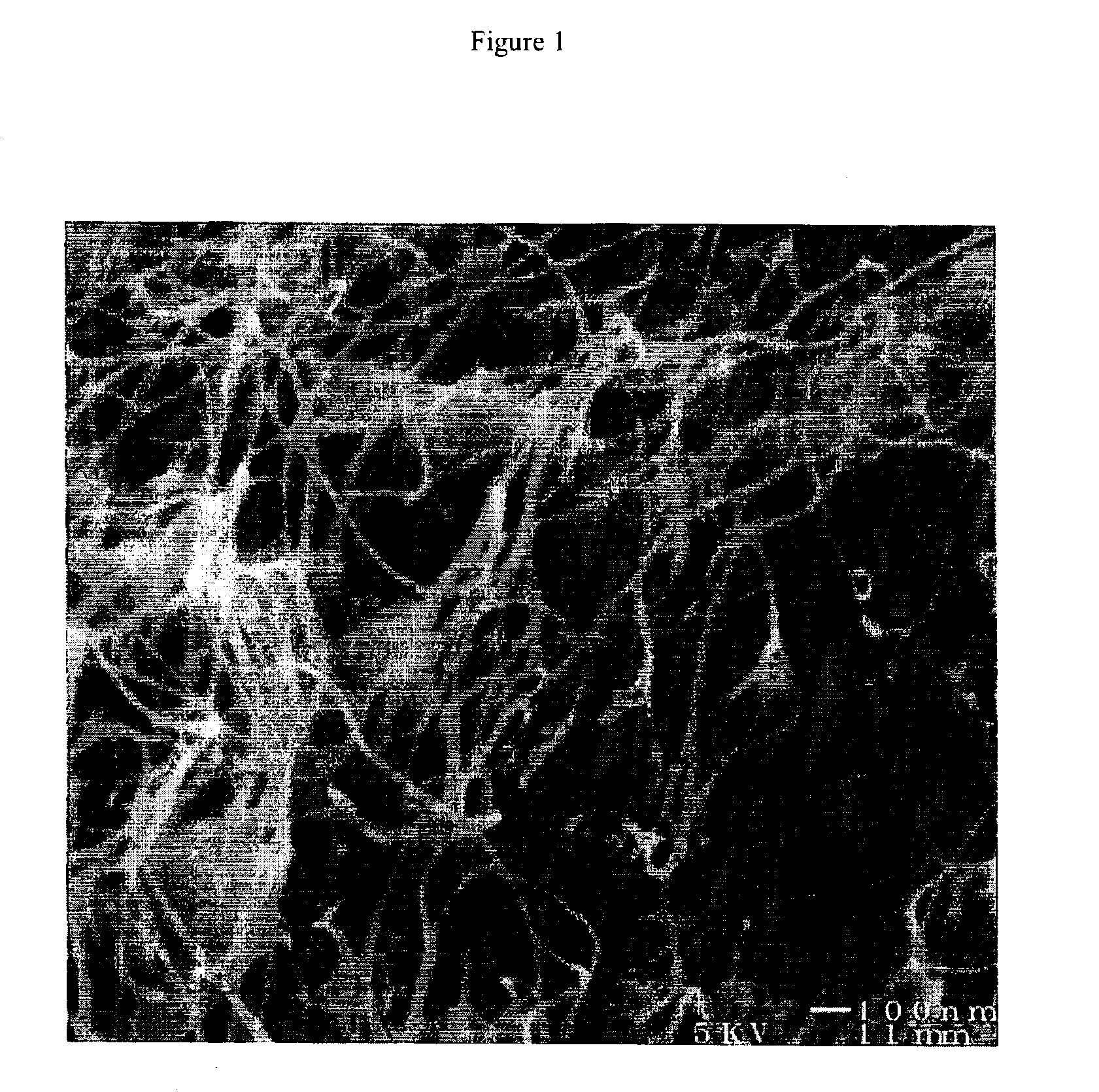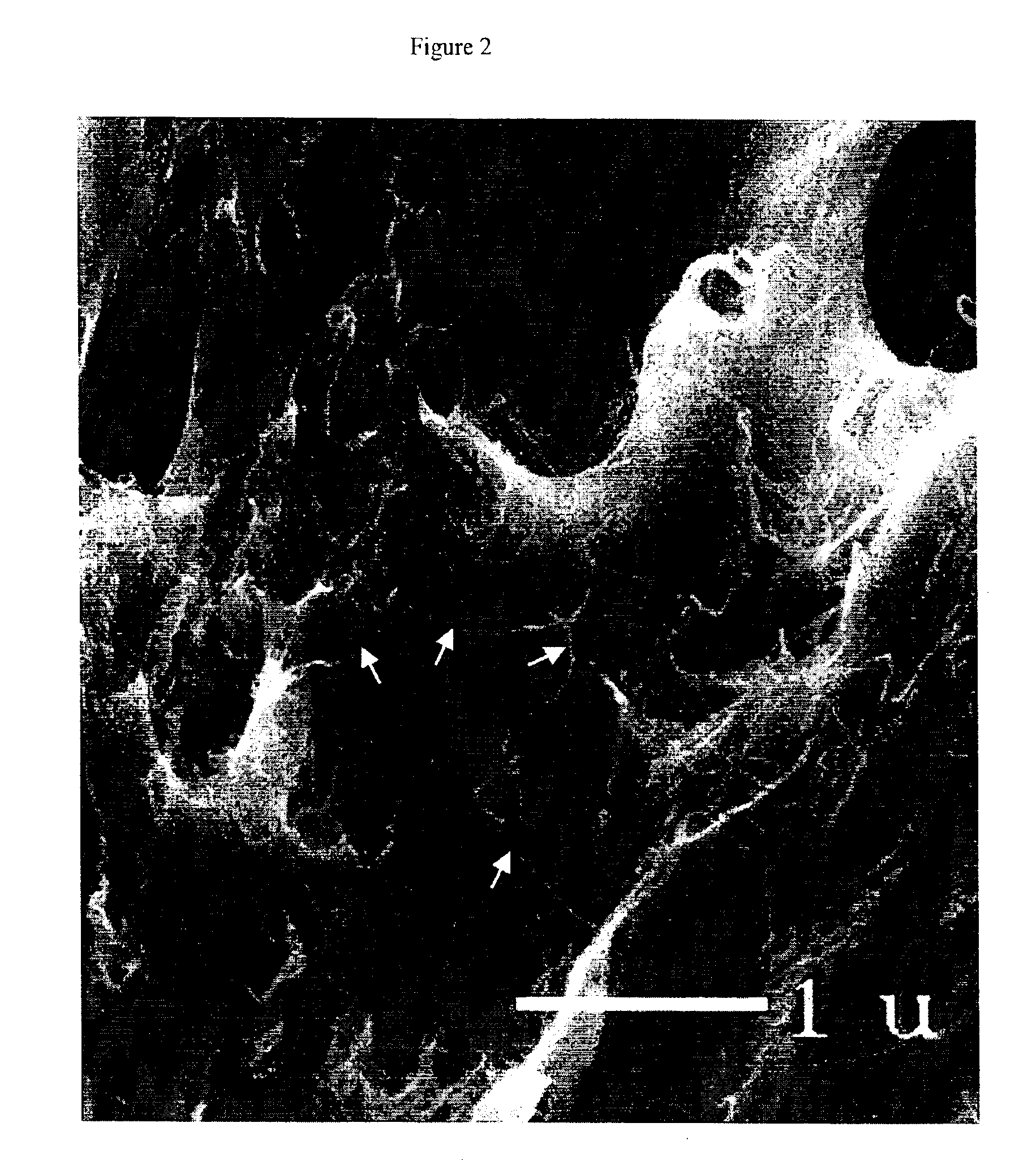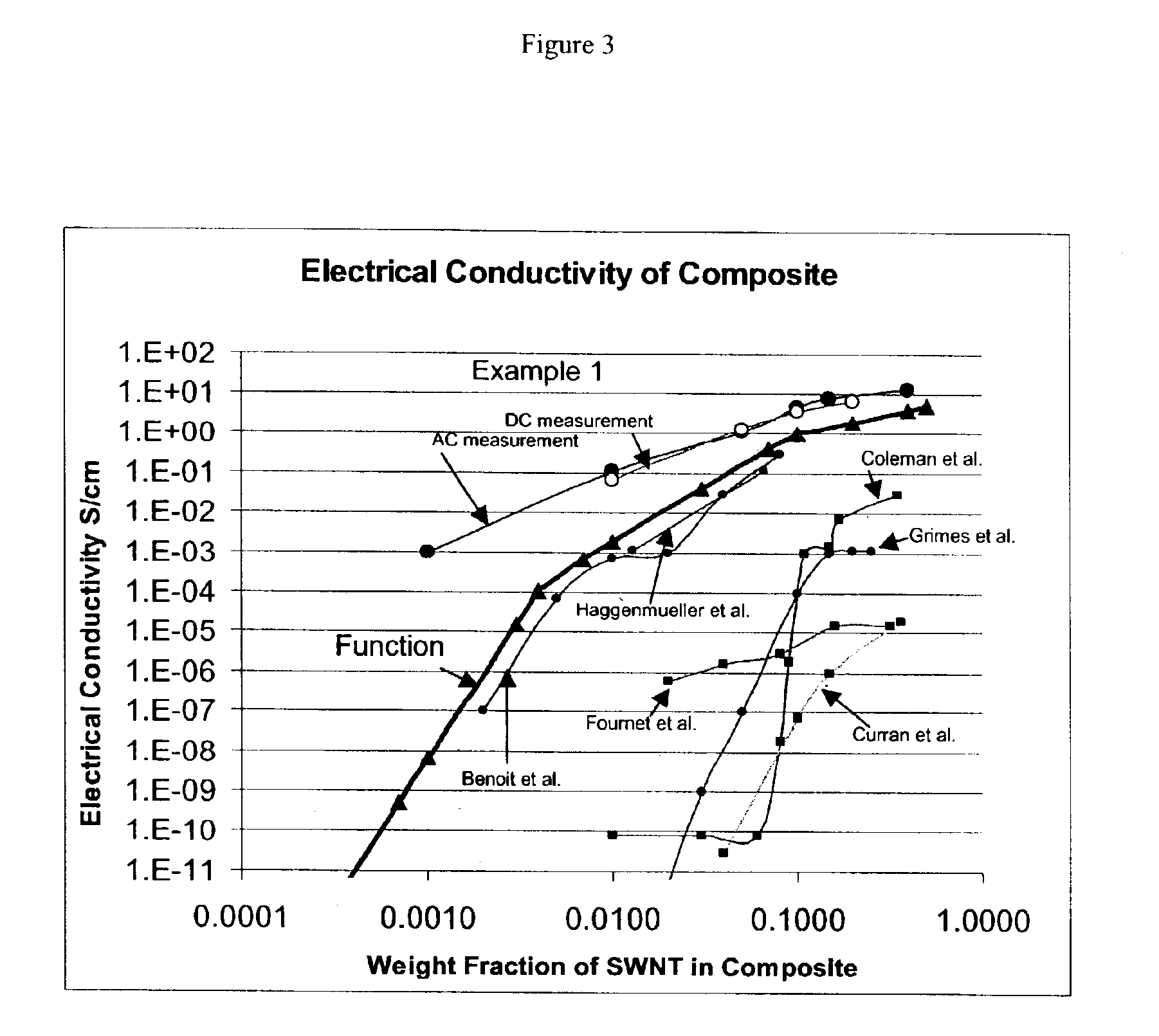Composite materials comprising polar polymers and single-wall carbon nanotubes
a technology of carbon nanotubes and composite materials, which is applied in the field of single-wall carbon nanotubes, can solve the problems of difficulty in dispersing nanotubes, hampered in achieving the full potential of single-wall carbon nanotube properties in polymers, etc., and achieves the effect of enhancing electrical conductivity
- Summary
- Abstract
- Description
- Claims
- Application Information
AI Technical Summary
Benefits of technology
Problems solved by technology
Method used
Image
Examples
example 1
[0031]0.5 g single-wall carbon nanotubes and 4.75 g polycarbonate were dispersed in 250 g chloroform for 12 hours using a magnetic stirrer. The dispersion was then sonicated for 30 minutes with a Branson high-amplitude wedge-tip ultrasonic horn with a Branson 940B power supply at a power setting of approximately 300 Watts. The solvent was then removed from the mixture in a resin kettle using heat, vacuum and mechanical stirring. The solvent removal process required about three hours. The polymer mixture was removed from vessel while still damp, and residual solvent was removed at 60° C. in an oven. The resulting polymer-SWNT composite was pressed into a sheet of approximately 1 millimeter thickness with a 2-platen press. This procedure produced a sample with a weight fraction of SWNT of approximately 0.1. Several samples with different weight fractions of SWNT were made according to this process by using the same amount of polycarbonate but different initial weights of SWNT.
[0032]Sc...
PUM
| Property | Measurement | Unit |
|---|---|---|
| Electrical conductivity | aaaaa | aaaaa |
| Electrical conductivity | aaaaa | aaaaa |
| Electrical conductivity | aaaaa | aaaaa |
Abstract
Description
Claims
Application Information
 Login to View More
Login to View More - R&D
- Intellectual Property
- Life Sciences
- Materials
- Tech Scout
- Unparalleled Data Quality
- Higher Quality Content
- 60% Fewer Hallucinations
Browse by: Latest US Patents, China's latest patents, Technical Efficacy Thesaurus, Application Domain, Technology Topic, Popular Technical Reports.
© 2025 PatSnap. All rights reserved.Legal|Privacy policy|Modern Slavery Act Transparency Statement|Sitemap|About US| Contact US: help@patsnap.com



